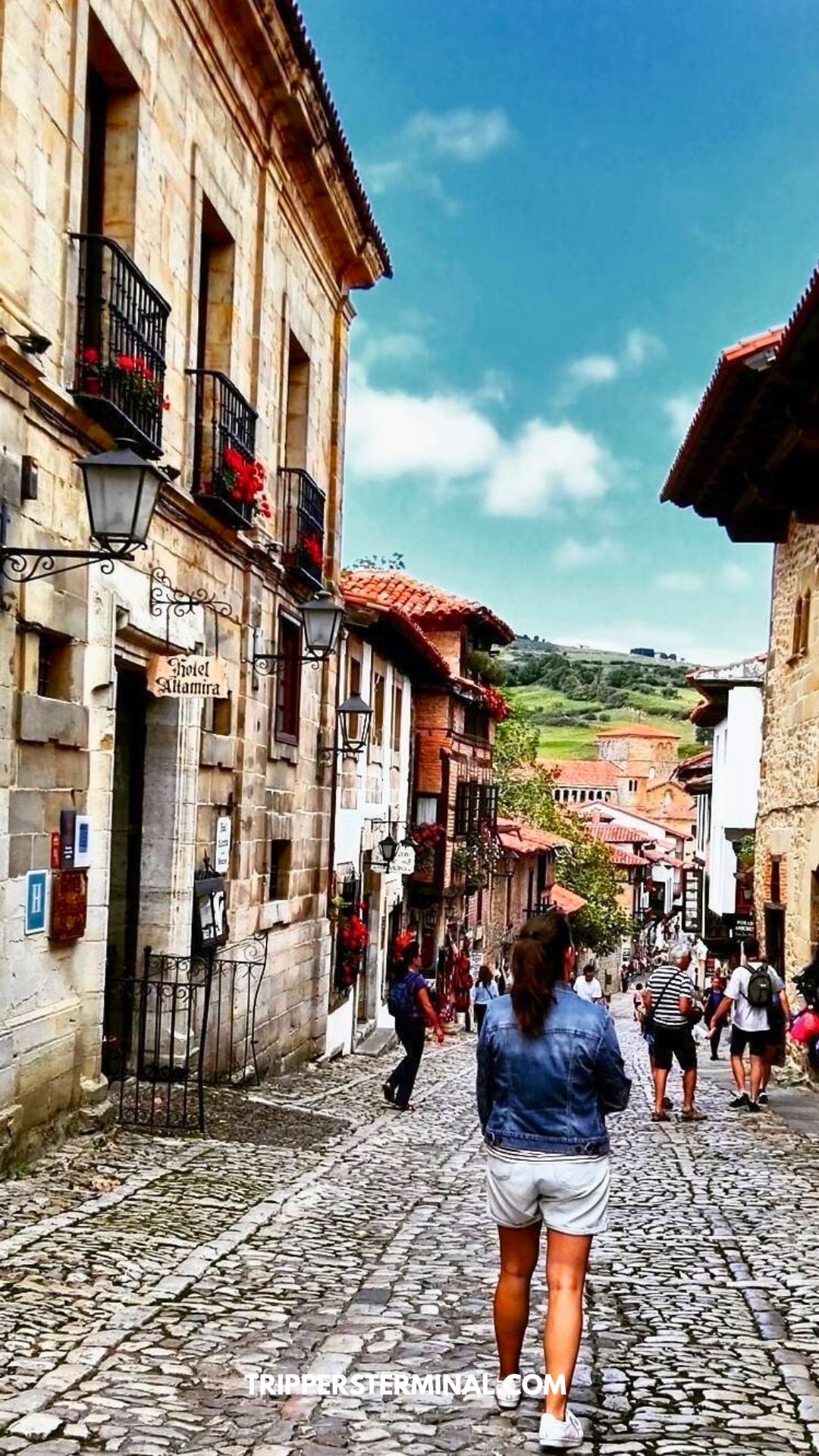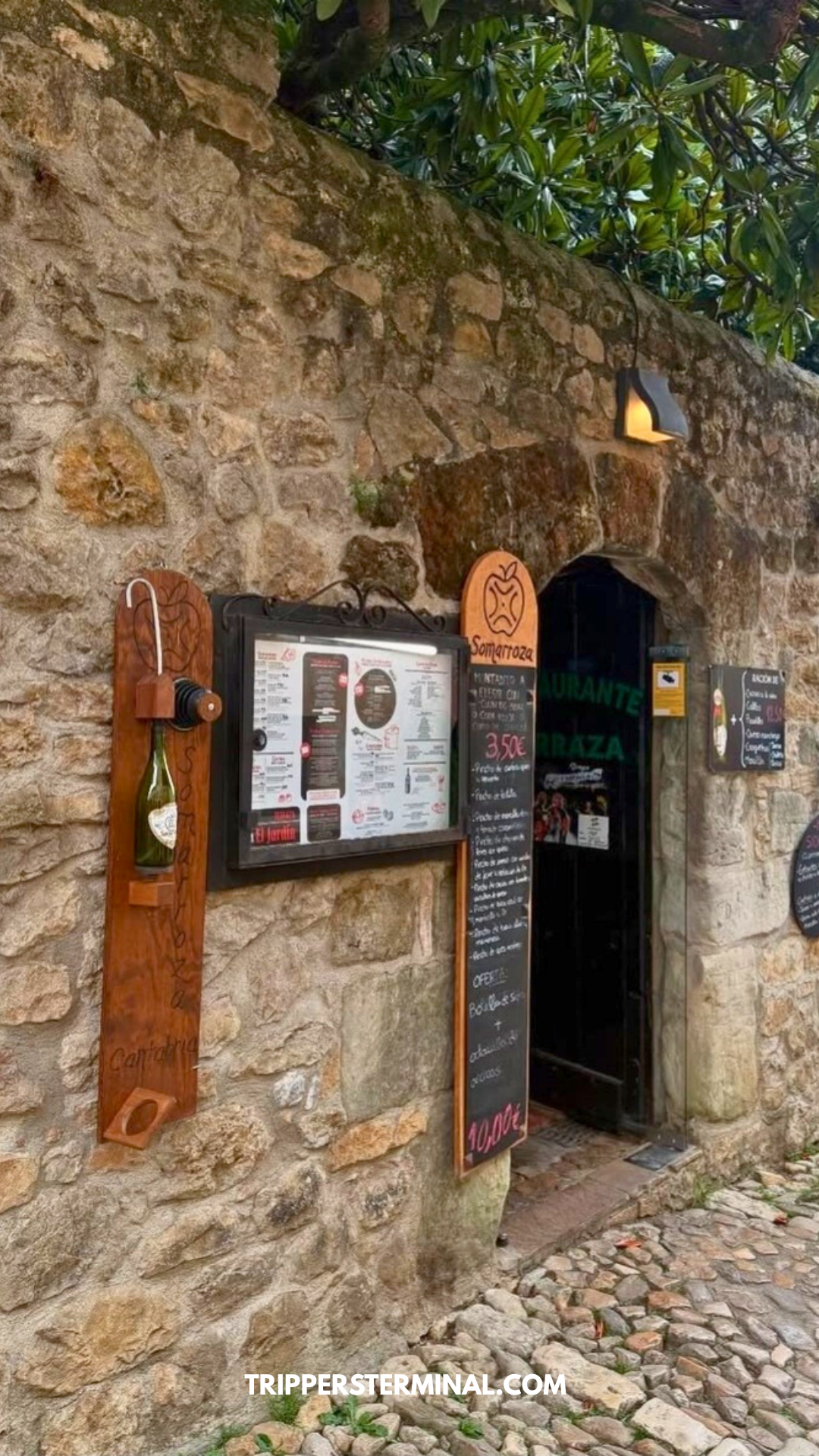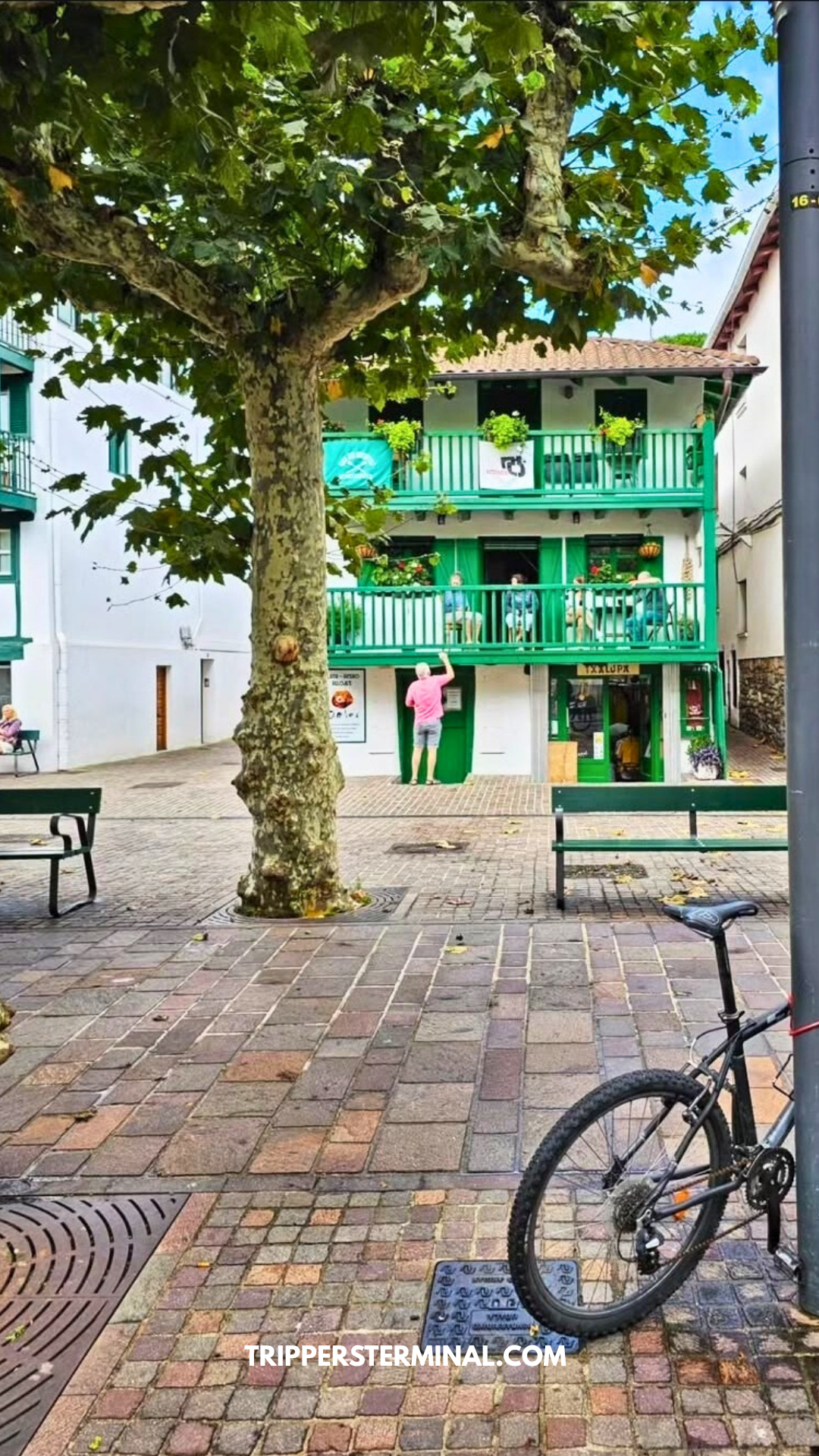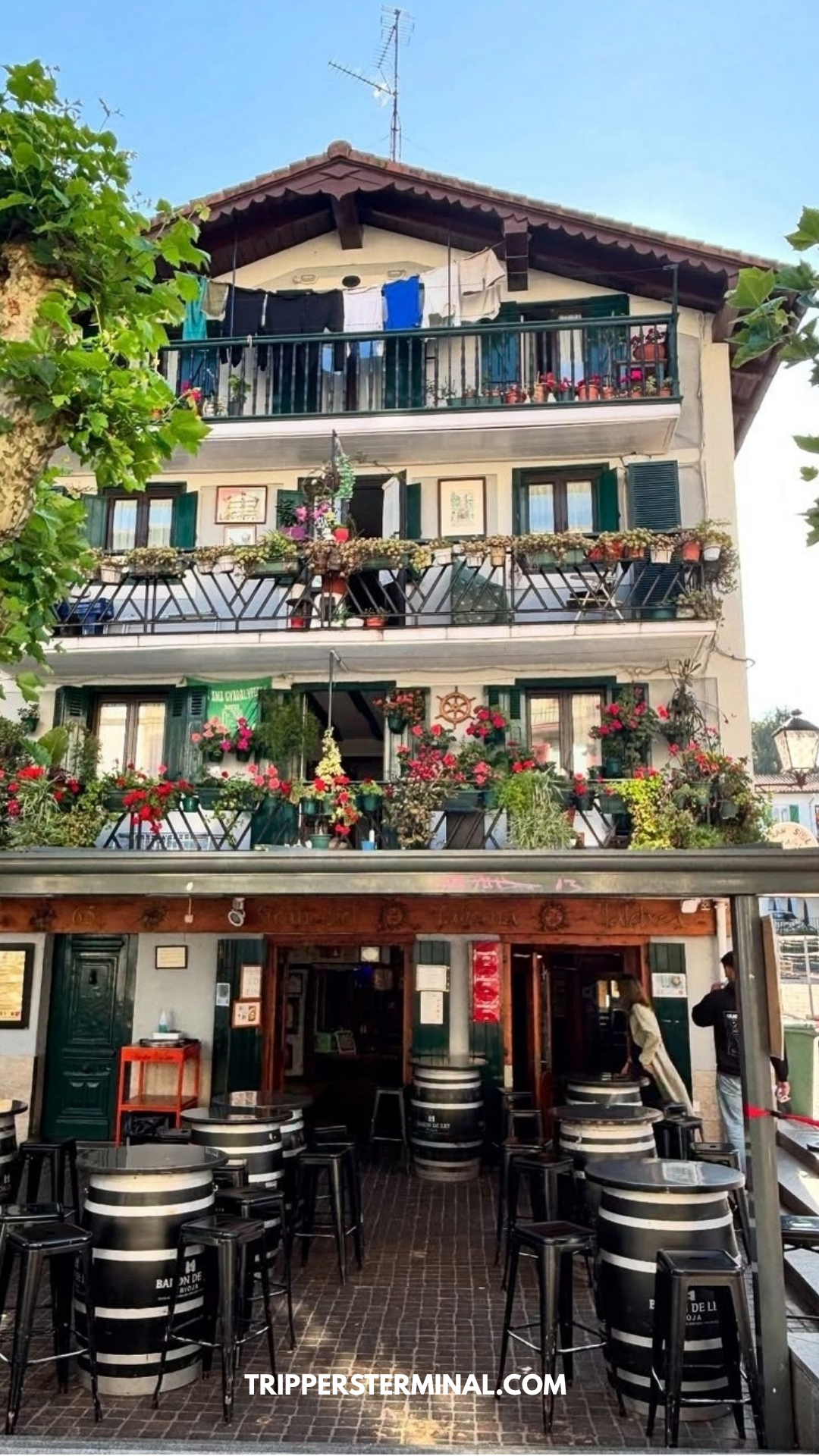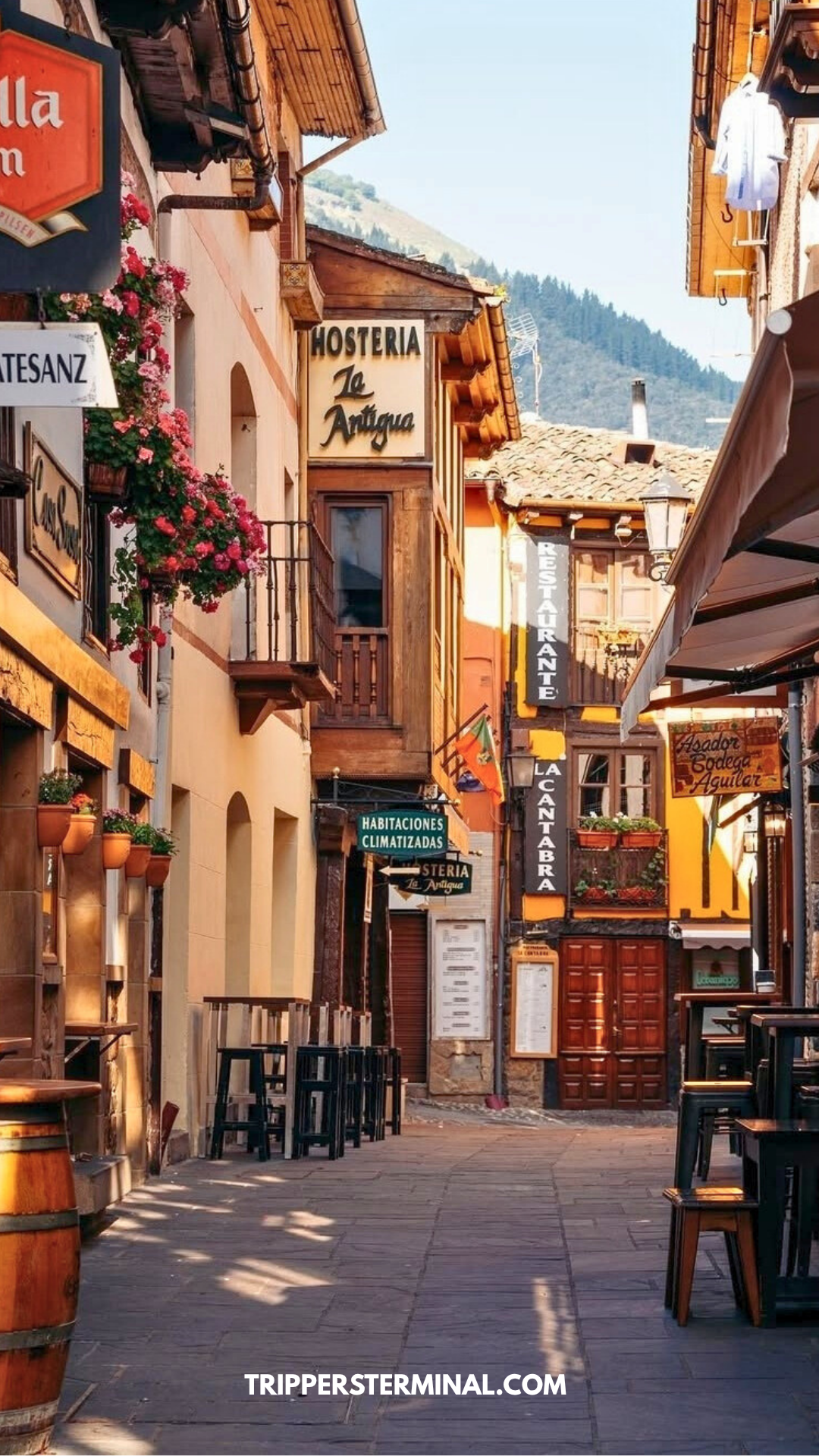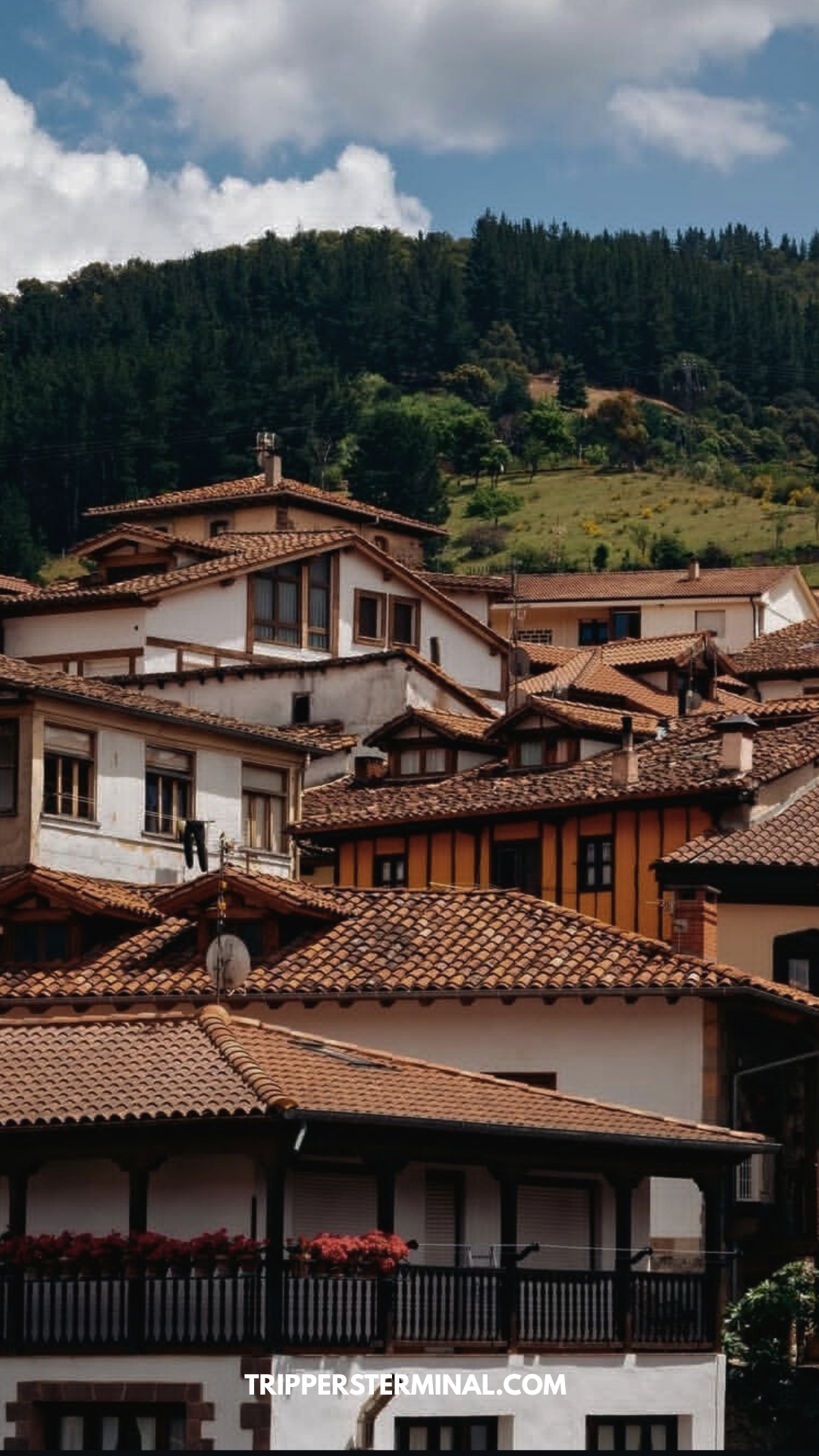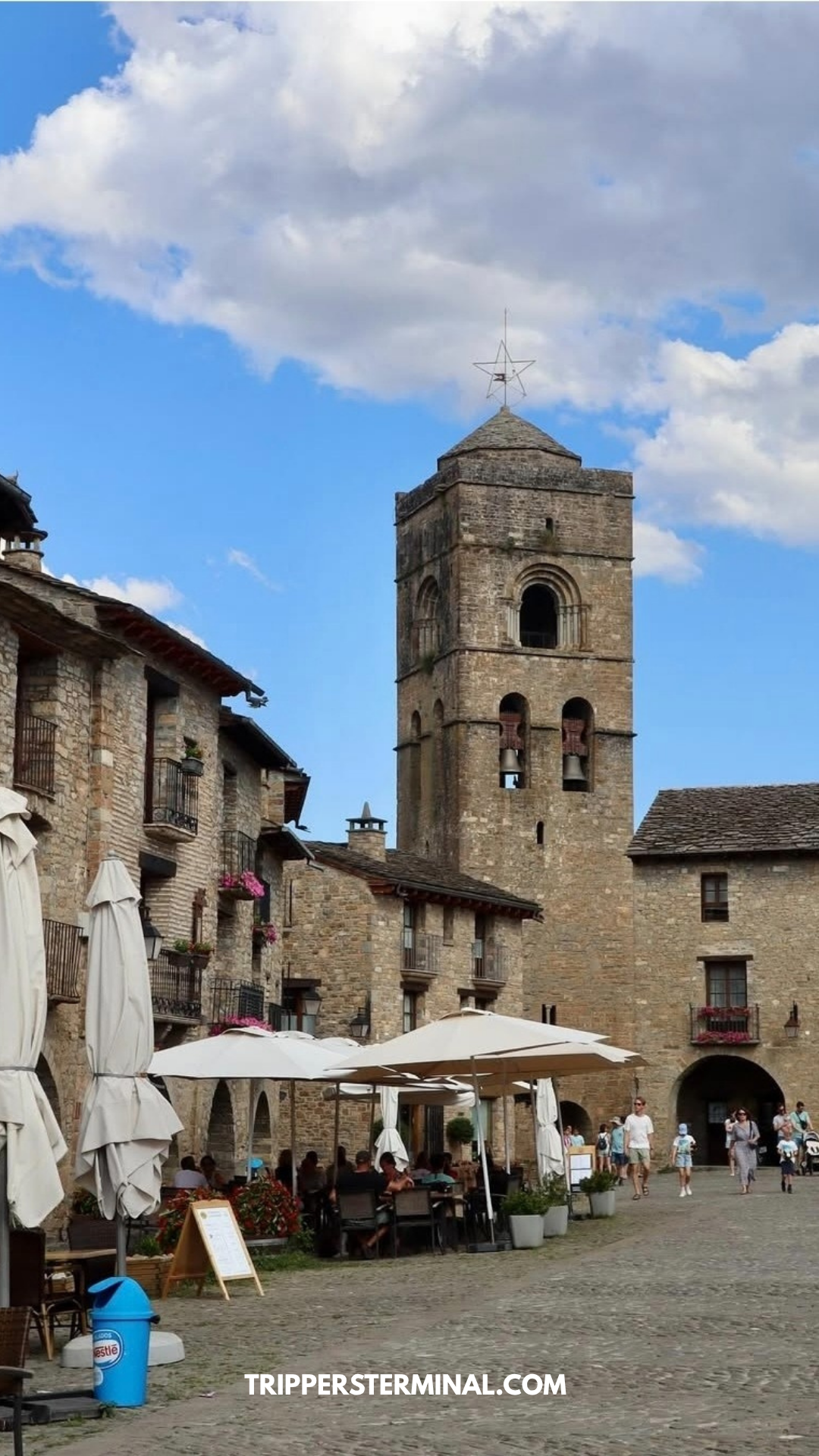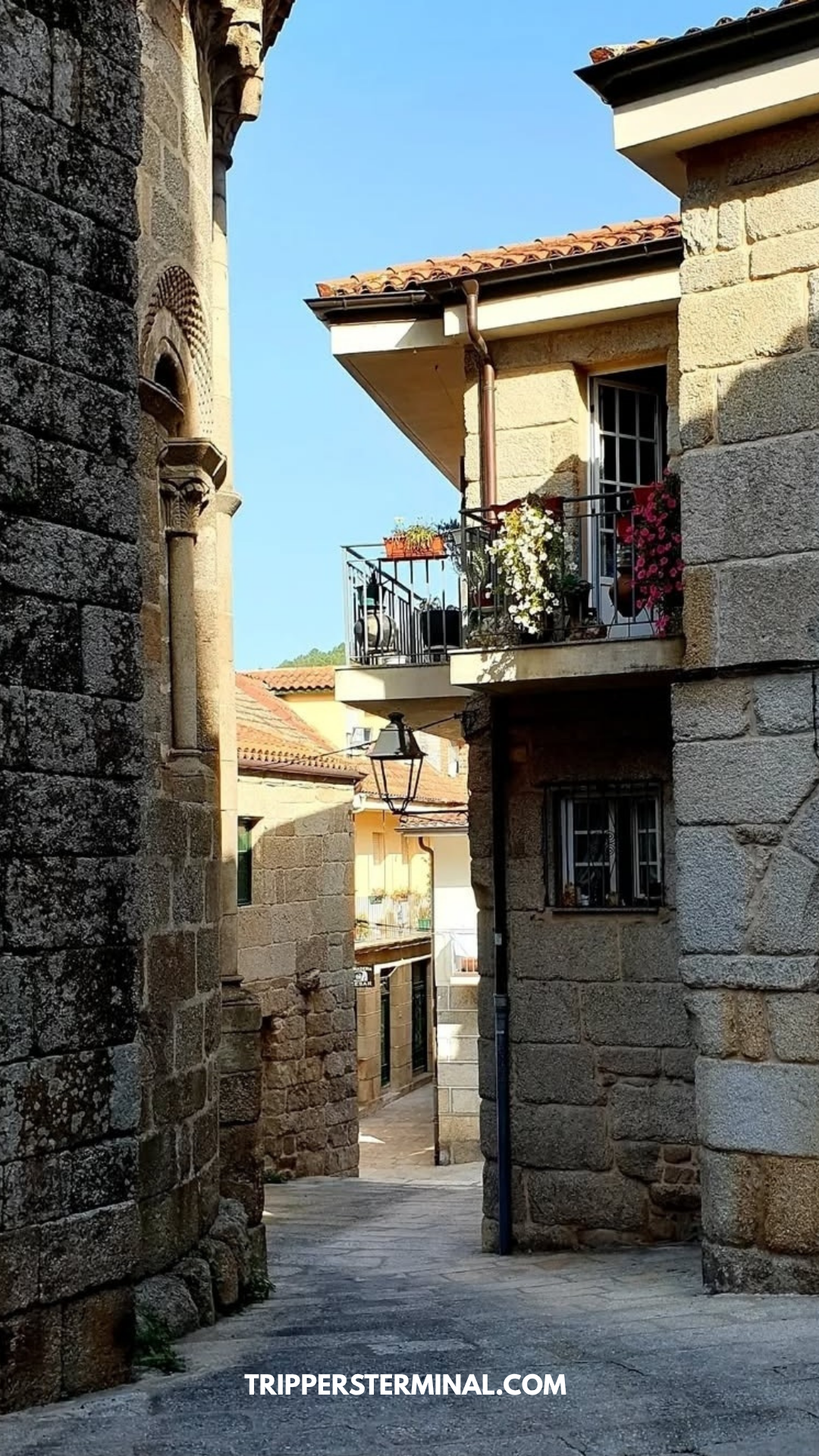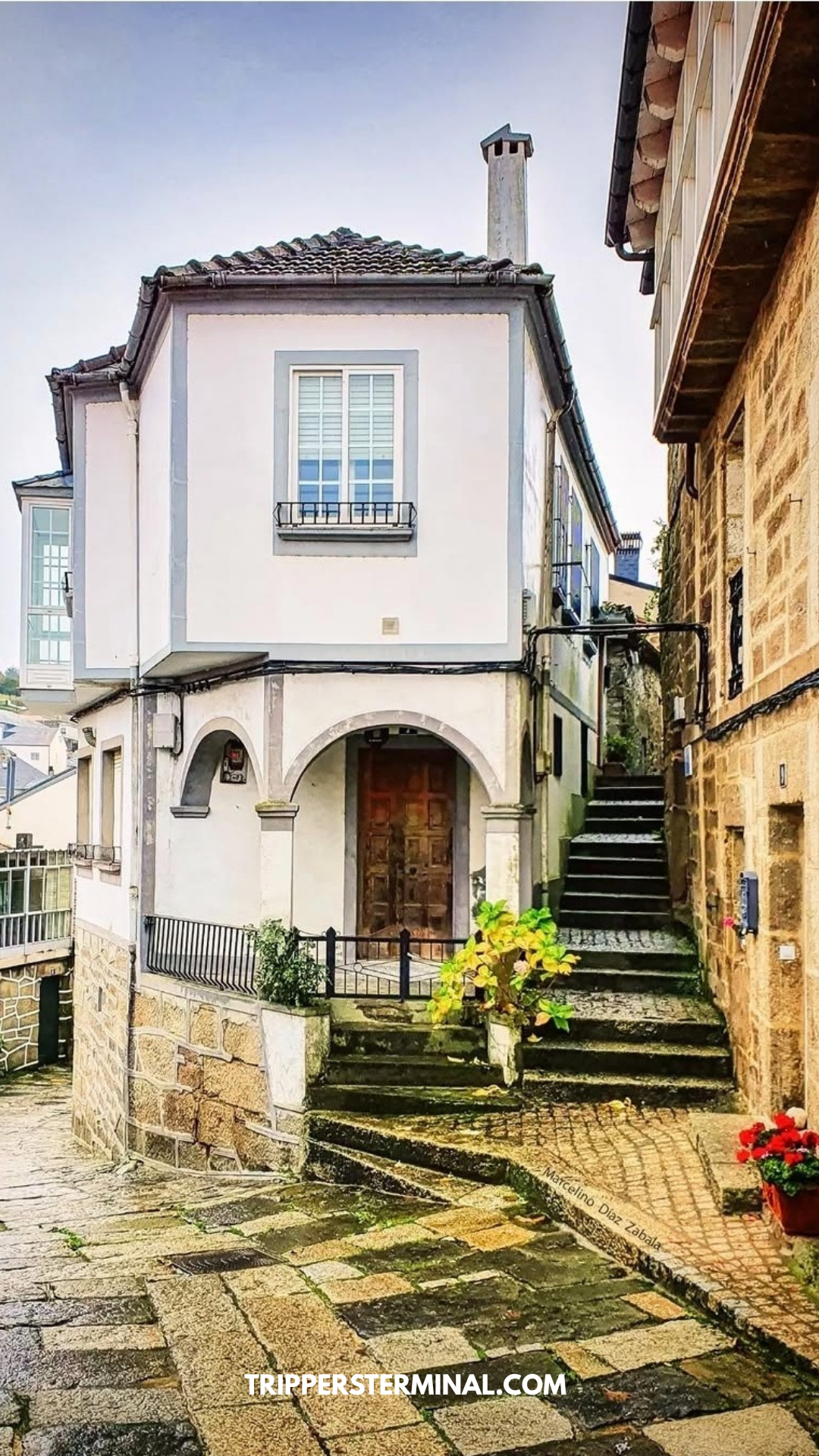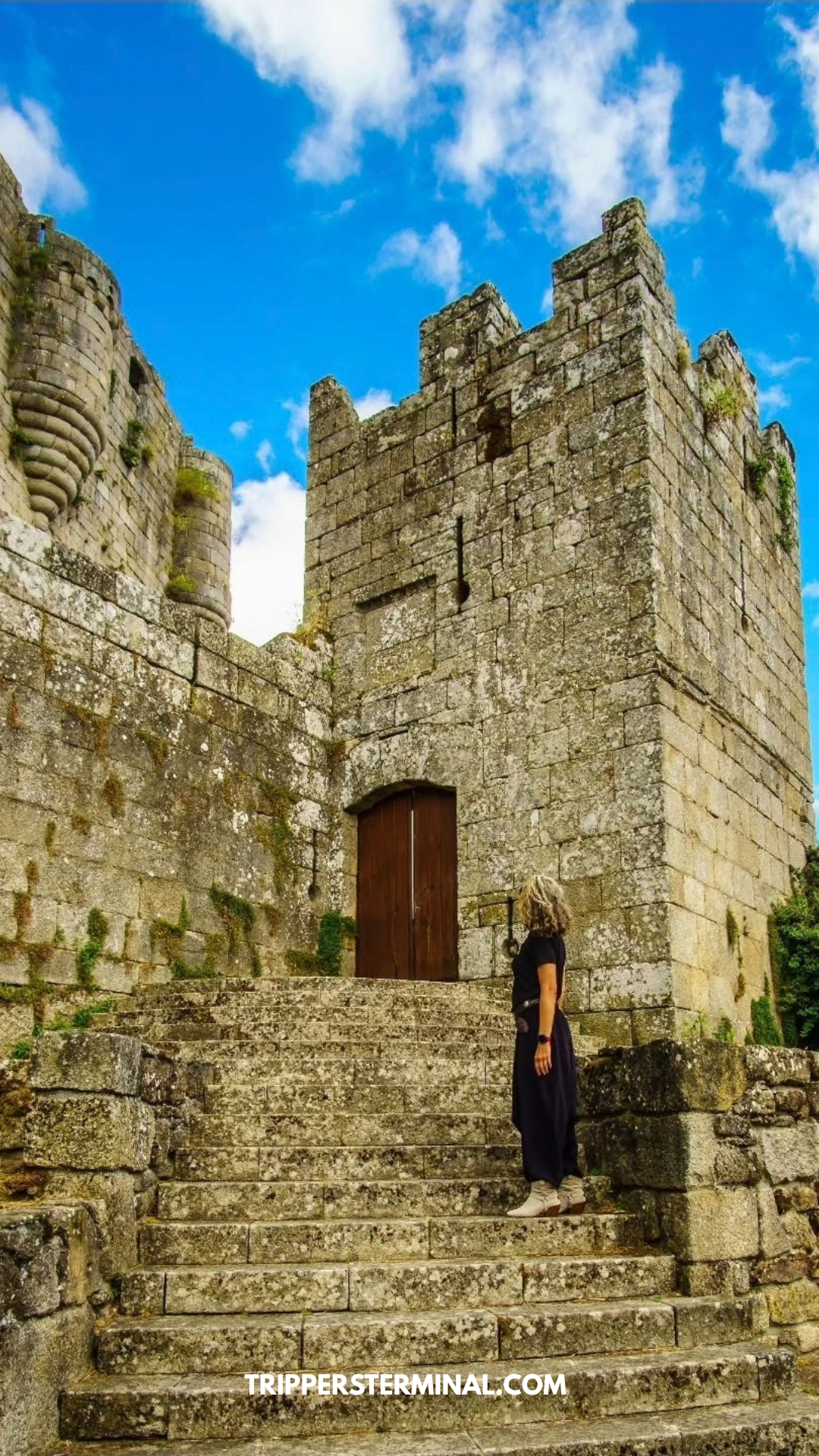Solo Autumn Escapes in Medieval Villages of Northern Spain
Autumn in northern Spain has a completely different vibe. Once the summer crowds are gone, the villages slow right down. Streets are quieter, the locals have time to chat, and you can actually hear the sound of your own footsteps on the cobblestones. Mornings feel fresh, afternoons are still warm enough to sit outside, and you don’t have to plan every minute: you can just wander and see what you find.
It’s one of the best times to travel alone. You can grab a coffee and keep the same seat for as long as you like. Duck into a little bookshop without feeling rushed. Sit on a bench and watch the village go about its day. There’s no hurry, and that’s the point.
There are lots of beautiful old towns in northern Spain, but some feel especially nice in autumn - quieter streets, friendly faces, and that mix of history and everyday life you just don’t get in busier months.
Here are a few medieval villages worth escaping to this season.
Santillana del Mar, Cantabria
Santillana del Mar has a reputation as “the town of three lies” (it’s not holy (santa), it’s not flat (llana), and it’s not by the sea (mar), but it makes up for all that with charm. This is one of those places where slowing down actually makes the visit better. You could walk the main cobbled street, Calle de Juan Infante, in ten minutes, but take it slowly and you’ll start spotting details that would be easy to miss: a hand-painted tile tucked above a doorway, a faded coat of arms carved into stone, a wooden balcony still bright with the last of its geraniums.
Many of the little shops here sell traditional Cantabrian crafts. Think hand-painted ceramics, woven scarves, or wooden toys made by local artisans. Even if you’re not buying, they’re worth browsing for a sense of the area’s traditions. Step into Taller de Cerámica de Santillana to see delicate pottery in soft blues and greens, or check out the local cheese shop Quesería Campo de Montalbán, which offers samples of creamy Queso de Nata and smoky Idiazabal.
For a mid-morning break, Café El Castillo is a safe bet. The coffee is strong, the apple tart is one of the best in town, and in autumn, the front window is perfect for watching locals amble past with shopping baskets or stop to chat in the street. If you’re visiting midweek in October, you might even find yourself the only customer for a while.
If books are more your thing, pop into Librería Campillo. It’s small, but it feels like a real discovery with a mix of regional history, illustrated guides, and classic literature. The owner is friendly and happy to recommend titles if you’re looking for something to remember the trip by (and they sometimes stock bilingual editions if your Spanish isn’t quite there yet).
The big historical draw is the Colegiata de Santa Juliana, a Romanesque church with a peaceful cloister. Most visitors step inside, take a few photos, and move on, but in autumn, it’s worth sitting on one of the benches outside for a while. The afternoon light has a way of warming the stone, and if you time it right, you’ll hear the echo of church bells across the empty square.
If you’re staying overnight, take an evening walk once the day-trippers have left. The village changes completely after dark - lanterns cast soft light on the walls, the cobblestones shine from the day’s rain, and you’ll likely have whole streets to yourself. It’s one of the simplest, most atmospheric experiences Santillana del Mar can offer. And it doesn’t cost a thing.
Hondarribia, Basque Country
Hondarribia sits right on the French border, and you can feel it the second you start walking around - the blend of Basque traditions with a subtle French influence runs through everything from the architecture to the food. The walled old town is compact but full of colour: traditional Basque houses painted in deep reds, greens, and blues, their wooden shutters thrown open and flower boxes still spilling with late blooms even in October.
The best way to start is at the Puerta de Santa María, the stone gateway into the old town, and follow Calle Mayor uphill. It’s a gentle climb, lined with elegant houses and small family-run shops. In autumn, the smell of roasted chestnuts drifts through the air from street vendors, mixing with the warm scent of bread from Panadería Ikatzenea, a bakery that has been here for decades. Their rustic loaf with pumpkin seeds is a good takeaway snack if you’re planning to explore for a while.
For lunch, Bar Gran Sol is almost a rite of passage in Hondarribia. It’s not fancy, but it’s famous for a reason: their gamba a la plancha (grilled prawns) and taco de bacalao (crispy cod bites) are the kind of pintxos that keep locals coming back. The bar can get busy even in quieter months, but the staff are friendly and quick to clear a space at the counter if you’re on your own. If you’d rather avoid the lunch rush, slip into Gastroteka Danontzat, a small, casual wine bar just off the main street where you can pair local Txakoli wine with cheeses from the surrounding hills.
If the weather turns (and in autumn it often does) Librería Ttartalo is the perfect escape. It’s a cosy, slightly old-fashioned bookstore where the floorboards creak and the shelves are stacked high. You’ll find books in Basque, Spanish, and a small but well-chosen English section. Nobody hurries you here; you can easily lose half an hour flipping through illustrated guides to Basque mythology or cookbooks on pintxos.
For views, climb to the terrace of the Parador de Hondarribia, a former fortress that now serves as a hotel. Even if you’re not staying there, the staff are used to visitors coming up to see the panorama. From here, you can look across the River Bidasoa into France, the pastel façades of Hendaye just visible in the distance. On a clear autumn afternoon, the light over the estuary is soft and golden, and the sea breeze carries the faint smell of salt.
If you have the time, wander down to the Marina district after lunch. It’s a completely different side of Hondarribia with narrow streets lined with brightly painted fishermen’s houses, cafés spilling out onto the pavement, and the gentle clink of cutlery from small seafood restaurants. In autumn, the pace is slower here too, and you can often find yourself sitting by the harbour with a coffee, watching the fishing boats come and go, feeling far from the bustle of any city.
Potes, Cantabria
Potes is the kind of small mountain town that feels like it belongs to another time. Nestled where several valleys meet in the Picos de Europa, it’s surrounded by peaks that are already dusted with early snow by late October. The town itself is a mix of stone bridges, slate roofs, and winding alleys that twist around without much logic - which is part of the fun.
The Puente de San Cayetano is a good starting point. It’s the main medieval bridge and gives you a first glimpse of Potes’ layered stone buildings and the Liébana Valley opening up beyond. From here, you can wander without a plan. The old quarter is full of narrow streets lined with traditional casas lebaniegas - stone houses with wooden balconies where drying peppers still hang in bunches from the summer harvest.
For a morning coffee, Café de Cabo is a favourite with locals. It’s small and unpretentious, with just a few tables inside, and in autumn the scent of their cinnamon tarta de manzana (apple tart) seems to drift out into the street. If you want something more filling, Casa Cayo (a family-run restaurant in the main square) serves comforting mountain dishes like cocido lebaniego, a chickpea and meat stew that’s perfect for chilly afternoons.
Potes is also a great place to browse for regional produce. La Tienda de Pepa sells local cheeses, honey from the surrounding valleys, and small bottles of orujo - the local pomace brandy that’s traditionally sipped after a big meal. Even if you’re not planning to carry much home, sampling is encouraged, and you’ll often find yourself chatting with the shop owners about the different varieties.
For books, Librería Pico’s is a tiny shop tucked away near the main square. It has a small selection in English alongside plenty of hiking guides and illustrated books on Cantabrian culture. It’s a handy stop if you’re tempted to explore the surrounding trails and want something to guide you.
If you’re up for a short walk, follow the river out of town towards the Monastery of Santo Toribio de Liébana, about 3 km away. It’s one of the oldest monasteries in Spain and holds a relic said to be part of the True Cross. In autumn, the walk is lined with chestnut trees turning shades of gold and rust, and the air carries that crisp mountain freshness that makes you slow your pace without even thinking about it.
Evenings in Potes are especially atmospheric in autumn. The day-trippers have long gone, the surrounding mountains are silhouettes against the darkening sky, and the streets glow softly under the yellow streetlamps. A simple glass of Rioja or a warming herbal orujo in one of the small bars is the perfect way to end the day before retreating to a quiet guesthouse - many of which are old stone houses converted into cosy stays with creaky floors and views over the valley.
Aínsa, Aragón
Aínsa is a cozy hilltop town where the Cinca and Ara rivers meet, it has that perfect mix of medieval charm and big Pyrenean views. The heart of the town is its main square (Plaza Mayor) a wide, cobbled expanse framed by stone arcades and rustic balconies. In the early morning, it’s so quiet you can hear your footsteps echo, and the air carries a chill that makes a hot coffee even more inviting.
Cafetería Callizo is a simple, no-fuss place right on the square, and it’s ideal for breakfast with a view. A croissant and café con leche here somehow taste better when you’re watching the sun hit the surrounding stone buildings. If you like places with a bit more personality, wander over to La Fábrica de Solfa. It’s part café, part bookshop, and part local artisan store: the shelves hold everything from second-hand novels to jars of Pyrenean honey, handmade jams, and herbal teas sourced from the surrounding mountains. It’s the kind of place where you linger longer than you meant to, maybe with a slice of homemade cake and a book you didn’t expect to find.
The castle sits just above the square, and while most people come for the views, the real charm is in how peaceful it feels. From the ramparts, you can see the patchwork of fields, the winding rivers, and the first wave of autumn colour rolling down from the mountains. There’s a small chapel inside that is often empty - a rare little pocket of calm that feels far away from the bustle of the square below.
If you have time, follow the gentle slope down from the castle towards the old town walls. The stone streets twist and narrow, revealing tucked-away doorways, potted geraniums still holding onto the last blooms of the season, and small family-run shops selling queso de oveja (sheep’s cheese) and cured sausage from nearby farms. Bodega del Sobrarbe is a particularly good stop if you’re interested in regional wine - the owner is always happy to talk about the different vineyards hidden away in the Pyrenees.
Just outside of town, a short walk brings you to the Mirador del Cinca. In autumn, the view is a blend of gold, copper, and deep green, with the rivers winding through the valley below. It’s worth timing your visit for late afternoon, when the low light makes the whole scene feel like an old painting. The walk back into Aínsa at sunset (the castle slowly coming back into view) is as memorable as anything you’ll see during the day.
Evenings here are slow. Restaurants open later, and there’s time to wander the square again when the arcades are lit by warm lantern light. You might end the day at Restaurante Callizo, where they serve inventive Pyrenean dishes that feel like a modern take on local tradition - or just with a quiet glass of wine outside a bar, watching the last few locals cross the square before the night fully settles in.
Ribadavia, Galicia
Wine lovers! This one is for you. We’re in the heart of Ribeiro wine country, and you’ll appreciate the local touch. Imagine those yummy seasonal dishes on café menus to the little wine shops tucked into side streets. But it’s also a place with deep layers of history. The old Jewish quarter is a maze of narrow stone lanes, wooden balconies draped in ivy, and doorways marked with symbols from another era. In autumn, when the crowds are gone, you can wander without a plan and have whole streets to yourself.
Start with a slow stroll through the old town, letting curiosity guide you. You might pass Casa do Concello (the town hall), a handsome 16th-century building that anchors the centre, before slipping into alleys where laundry still hangs overhead and cats sun themselves on windowsills. If you notice the faint smell of woodsmoke, it’s probably from someone firing up their kitchen for a hearty Galician lunch.
Wine lovers will want to pause at Tapería O Birrán, a small, friendly spot where they pour local Ribeiro by the glass. The white Ribeiro wines (crisp, slightly floral) are the perfect match for their autumn tapas: roasted padrón peppers, slices of creamy tetilla cheese, and warm bread still carrying the scent of the oven.
For a front-row seat to village life, Café Plaza is ideal. Overlooking the main square, it’s the sort of place where you can sit with a coffee and watch as locals greet each other, delivery vans rumble in, and children dart across the cobbles on their way home from school. Even in October, there’s a gentle hum of daily life here, but without the rush.
Book lovers should make time for Librería Biblos, an independent shop that feels like a private library someone has decided to share. The shelves are stacked with Galician poetry, local history, illustrated children’s books, and even a small section of fiction in Spanish and English. The atmosphere is hushed but welcoming - the kind of place where you instinctively lower your voice and slow your pace.
When you’re ready for a break, head to Praza de Buxán, just outside the busier part of town. It’s nothing grand (a small square with a few benches, shaded by old trees) but it’s one of the most peaceful corners in Ribadavia. You can sit here and hear the faint murmur of the river nearby, or just watch the light shift across the rooftops as the day moves on.
And if you’re here on the right weekend in autumn, you might catch one of the local wine festivals or small markets. They’re not flashy events, but they bring together winemakers, bakers, and neighbours in a way that reminds you why Galicia is so good at making visitors feel like they’ve stumbled into something special.
Castro Caldelas, Galicia
You’ll find Castro Caldelas high in the hills of the Ribeira Sacra, and from almost any corner of town you can catch glimpses of the valleys unfolding below. The air here feels different in autumn (crisp, a little sharper) and the mix of oak and chestnut trees in the surrounding countryside means the hillsides turn into a patchwork of gold, rust, and deep green.
The town’s centrepiece is the Castelo de Castro Caldelas, a sturdy medieval fortress that has watched over the area for centuries. Climbing its towers rewards you with sweeping views across the Sil River valley - the kind of view that makes you stop talking for a moment just to take it in. On a clear October day, the colours are at their most vivid, and you can trace the lines of tiny country roads disappearing into the hills.
Inside the castle, there’s a modest but interesting display about local history, winemaking traditions, and the Ribeira Sacra’s monastic heritage. It won’t take long to see, but it gives you context for the vineyards and old churches scattered through the surrounding landscape.
Afterwards, wander down to Café Plaza in the main square. It’s a straightforward, no-fuss café where you can order a coffee or a glass of local Mencía and watch the small-town life. A couple of locals might be reading the paper, someone will almost certainly pop in to greet the owner, and now and then you’ll hear the slow toll of the church bell.
For something a bit different, stop by O Faiado da Memoria, a small shop that feels like part gallery, part local pantry. The shelves are filled with handmade textiles, jars of local honey and preserves, and simple but beautifully made wooden crafts. It’s the kind of place where you end up buying something small to remember the trip - not because you planned to, but because it feels connected to the place.
Autumn is especially quiet here. You might walk a side street and go ten minutes without seeing anyone, and isn’t that luxurious?
Autumn in northern Spain
Forget summer - autumn is a really good time to be in these villages. The weather’s cooler, the streets aren’t crowded, and there’s more space to just walk around and take things in. Shops and cafés aren’t rushed, so you can actually have a chat if you want to. You’ll probably notice small things, like the sound of the church bell, a cat stretched out in the sun, the smell of bread coming from the bakery.
You don’t need a big plan here. Just turn up, have a wander, stop for coffee when you feel like it, and keep going. Take the side street that looks interesting. Sit in the square a bit longer than you planned. Go back to a spot you liked yesterday just to see it in different light. It’s that kind of vibe.
These places work best when you take your time. You can see a lot or do almost nothing, and it still feels worth it.
Before you go… check out some of our other travel guides:
Discover the High Coast of Sweden: Get inspired by this peaceful corner of Sweden where nature, local art, and small-batch spirits come together. Perfect if you love wild coastlines and cozy local stops along the way. Read more
Slow and peaceful solo travel ideas in Europe: A thoughtful guide for solo travelers looking for calm, inspiring places across Europe to relax, recharge, and explore at their own pace. Read more
Hidden villages in southern France: Explore lesser-known villages where you can stroll through markets, sip coffee at quiet cafés, and experience authentic French charm far from the crowds. Read more
Cozy solo travel ideas for the Greek and Balearic Islands: Find peaceful island escapes with charming harbors, laid-back cafés, and beautiful spots for quiet afternoons by the sea. Read more
FAQ: Solo Autumn Trips in Medieval Villages of Northern Spain
Is northern Spain worth visiting in autumn?
Absolutely. Autumn in northern Spain means cooler temperatures, quieter streets, and villages that feel like they’re yours to explore. The summer tourists have gone home, so places like Santillana del Mar, Hondarribia, Aínsa, Ribadavia, and Castro Caldelas are calm and relaxed. It’s the ideal season for slow travel - you can wander cobbled streets without dodging crowds, enjoy cafés without queues, and see the countryside turn shades of gold, red, and orange.
Which are the most beautiful medieval villages in northern Spain for a solo trip?
Some of the standouts include:
Santillana del Mar, Cantabria – A perfectly preserved medieval village with cobbled streets, wooden balconies, and plenty of small shops and cafés.
Hondarribia, Basque Country – A colourful walled old town right by the French border, known for its painted wooden houses and excellent pintxos bars.
Aínsa, Aragón – Perched above the Pyrenees with one of the most atmospheric plazas in Spain.
Ribadavia, Galicia – Known for its Jewish quarter and Ribeiro wine.
Castro Caldelas, Galicia – High in the Ribeira Sacra with a dramatic medieval castle and sweeping valley views.
What’s the best way to travel between these villages?
If you want flexibility, renting a car is best. Public transport exists, but it’s limited in autumn and often means long waits or multiple connections. With a car, you can easily link villages together, stop at scenic viewpoints, and detour into nearby countryside.
What’s the weather like in northern Spain in October and November?
Expect mild days (12–18°C), cooler mornings and evenings, and a chance of rain - especially in Galicia and the Basque Country. Layering is key. Even rainy days have their charm here; the stone streets glisten, and cafés feel extra cosy.
What can I do in northen Spain if it rains?
Plenty. Duck into independent bookshops like Librería Campillo in Santillana del Mar or Librería Ttartalo in Hondarribia. Spend an hour in a café watching life go by - Café El Castillo in Santillana is perfect for that. Visit small museums like the castle exhibition in Castro Caldelas, or browse local shops selling crafts, wine, and regional food.
Is northern Spain safe for solo travellers?
Yes. These small towns are generally safe, welcoming, and easy to navigate alone. Crime is rare in the villages - you’re more likely to be stopped for a friendly chat than anything else. As always, just keep basic travel common sense in mind.
What’s the best time in autumn to visit northern Spain villages?
Late September to early November is ideal. October is especially good! The weather is still pleasant, the autumn colours are at their best, and local cafés, markets, and bakeries are still open daily before winter quiet sets in.

